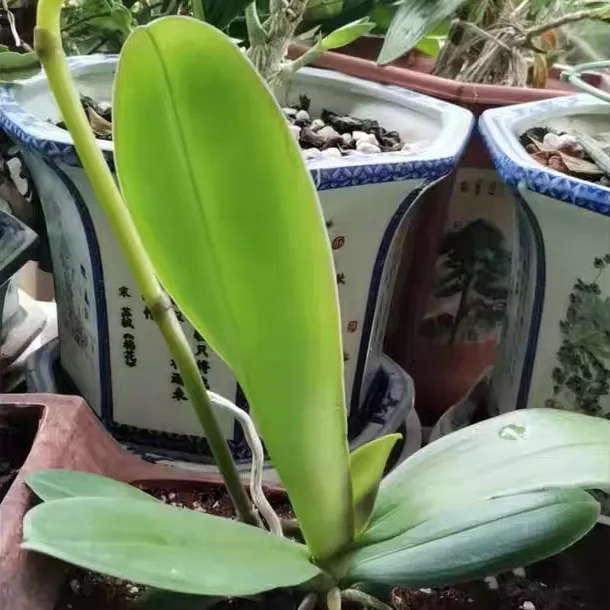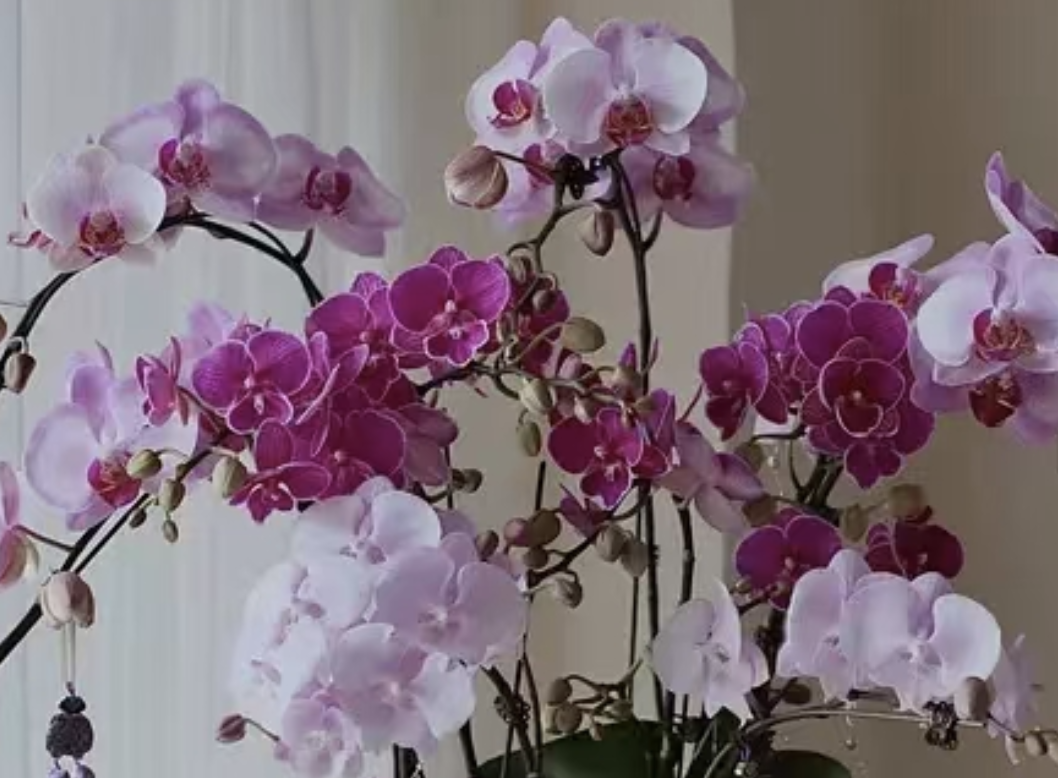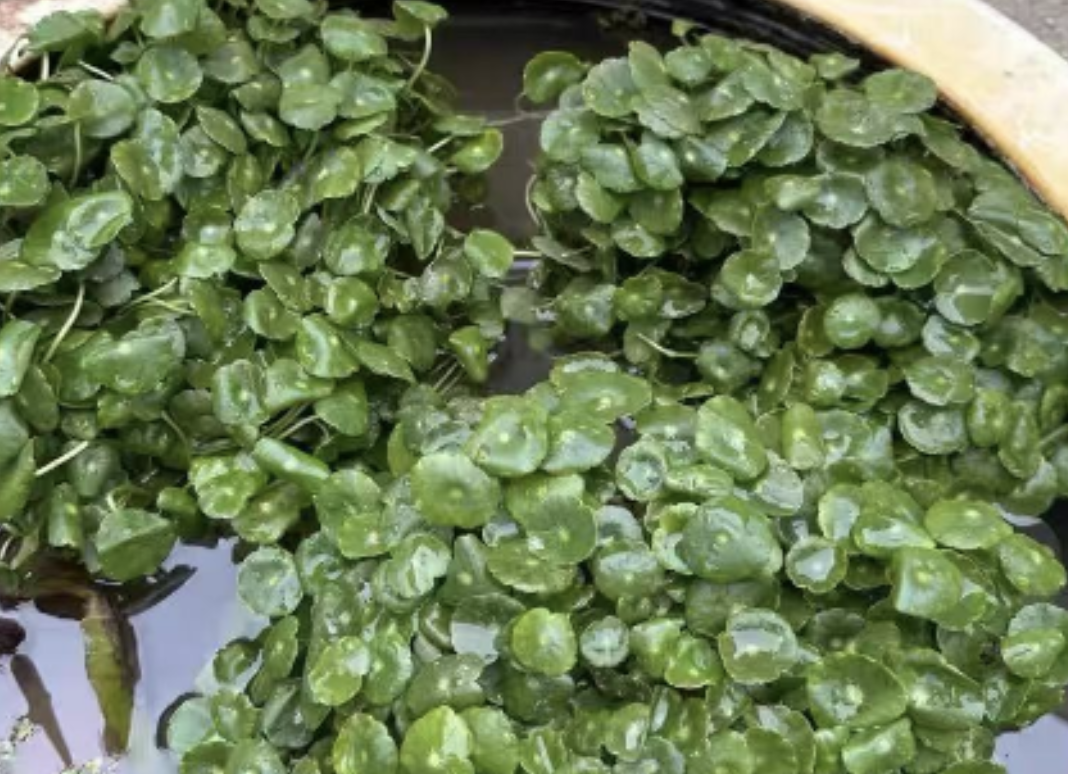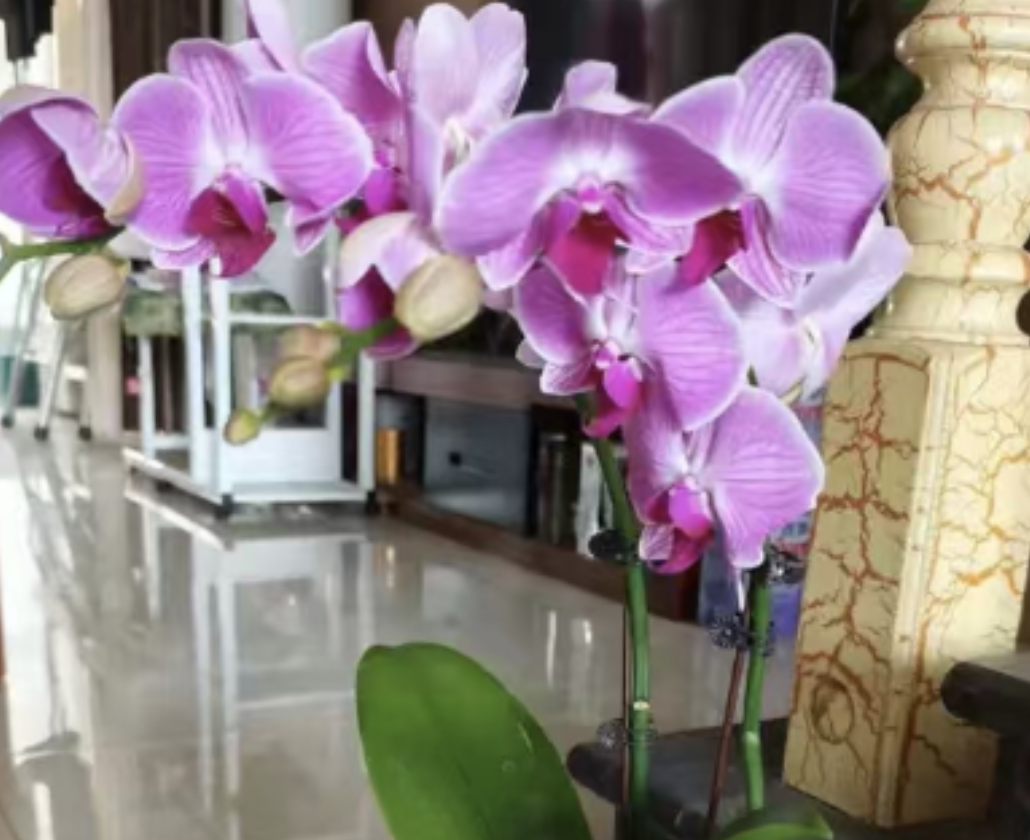Is there anyone who grows Phalaenopsis who hasn't had this dilemma: between the beautiful and cheap post-bloom plants on the flower shop shelf and the unbloomed young plants, which one should you pick? Today, let's talk about how to choose a plant.
### Beginners should choose young plants
Young plants are those robust small plants that haven't bloomed yet. Don't think that there are no flowers to enjoy for the time being—they have so many advantages! Their roots are all white, plump aerial roots with super strong abilities to absorb water and nutrients. Even if you occasionally forget to water them or apply a bit too much fertilizer, they won't easily die (the fault tolerance rate is really high!).
Moreover, young plants have never been "forced" to bloom. They have sufficient nutrient reserves, and you can take care of them slowly according to their growth rhythm, watching them grow new leaves, develop aerial roots, and produce flower spikes by themselves the next year. That sense of accomplishment is 100 times better than buying a blooming plant directly! The key is that the price is also friendly—you can get one for just a few dozen yuan, and if you take good care of it, it can stay with you for several years.
### Experienced growers can challenge post-bloom plants
If you have already mastered skills such as "pruning withered flowers", "repotting without root rot", and "root repair", then post-bloom plants are actually a cost-effective choice. But the premise is that you need to know how to "select the plant": the leaves must be firm and not soft; when you check the roots, there should be no black rot or hollow roots; it's best to have more than 3 healthy leaves. After buying it home, immediately cut off the withered flowers, replace the pot with breathable planting material, provide sufficient scattered light, and wait patiently for it to recover—there is still hope for it to bloom again!
### Northern flower lovers should be cautious about post-bloom plants in summer
In northern regions, there is heating in winter, making indoor environments dry and stuffy; in summer, temperatures soar. Post-bloom plants, which have just consumed a lot of energy from blooming, already have weak roots. Once they encounter high temperatures or fluctuating temperatures, they can rot their roots in minutes! Moreover, it's hard for them to go dormant in winter, so there's basically no chance of them blooming again the next year. Beginners can easily end up with an "empty pot"...
### Southern flower lovers can try post-bloom plants in spring and autumn
In southern regions, temperatures are stable at 15-25℃ in spring and autumn, which is the peak growing season for Phalaenopsis. If the post-bloom plant is in good condition (with plump roots and dark green leaves), the humid climate in the south can help it recover quickly. But after buying it home, you must isolate it first! Place it alone in a corner for 2 weeks of observation to avoid spreading insect eggs to other plants.
How to choose between young Phalaenopsis plants and post-bloom plants

Share with
Tagged in :




Leave a Reply